Here we are again, time to pronounce my Top Ten Sustainability Reports for 2015. Every year I say that selecting my Top Ten is the hardest thing I do on the CSR Reporting Blog and every year I am right. I am always soooooo tempted to increase the number to more than 10. I have been picking Top Tens now for several years... 2010, 2011, 2012 , 2013 and 2014. These Top Ten posts are always the most popular posts of the year and get thousands and thousands of views. So why change a winning formula? Well, I did make one change this year. I decided NOT to include any reports that had already been included in one of my Top Ten lists at any time in the past. I have a small group of favorite reporters and its very tempting to include them year after year (and I have included some of them more than once in the past) ... great, consistently high quality reporters such as Impahla, Telekom Austria, Larsen and Toubro, Westpac Australia, BT, Tiffany & Co and several others. I know when they publish that their report is going to be informative, professional, useful and good quality. But if I included these reporters every year, I wouldn't have room for any others. The entire purpose of the Top Ten is to spread a little awareness and recognition beyond the reporters that already have a good share of attention.
My Top Ten selection is always based on reports that cross my radar throughout the year, not a scientific or strict methodical evaluation of report quality. I try to select a cross-section of companies, sectors and countries, rather than selecting the big names in reporting that generally pick up reporting awards around the world. I focus on reports by corporations / businesses, not public agencies or non-profits or trade associations (although there are some really great innovative reports coming out of these sectors - maybe I should do a Top Ten just for non-business reports). Of course, I exclude reports of clients of my firm Beyond Business.
As I have done for the past few years, I loosely use the AIM MODEL as I consider the reports that I find worthy of mention. Each report adds value in its own way, and each report is evidence of progress. Therefore, in mentioning a mere ten reports of the thousands that were published in 2015, I continue to do reporting somewhat of an injustice. On the other hand, highlighting these ten reports and their unique elements may provide insights and inspiration for new, or potentially better, reporters. In any event, this is always a post I find both challenging and fun all at the same time.
As I have done for the past few years, I loosely use the AIM MODEL as I consider the reports that I find worthy of mention. Each report adds value in its own way, and each report is evidence of progress. Therefore, in mentioning a mere ten reports of the thousands that were published in 2015, I continue to do reporting somewhat of an injustice. On the other hand, highlighting these ten reports and their unique elements may provide insights and inspiration for new, or potentially better, reporters. In any event, this is always a post I find both challenging and fun all at the same time.
Here is a quick reminder of my AIM MODEL:
Authenticity: I look for whether the company has reported in an honest way, using stakeholder voices to supplement performance data. Authenticity for me includes balance, accuracy and completeness. I look for targets and progress against stated targets.
Materiality: I look for whether the company has clearly defined the most important issues for the company and its stakeholders and described the way in which those issues have been identified and prioritized. Reporting materiality should also include a certain amount of contextual information which can assist us in understanding the issues and why they are material.
Impacts: I look for whether the company identified impacts rather than just presenting a shopping list of activities. This means discussing the outcomes of what was achieved. The outcomes are the achievements (impacts), not the activities. This is by far the most difficult thing for companies to address and very few do it well.
By the way, even the Top Ten reports have opportunity for improvement. So don't expect me to be exclusively gushing. That's not in my nature.
By the way, even the Top Ten reports have opportunity for improvement. So don't expect me to be exclusively gushing. That's not in my nature.
And, in alpha order by company name, here is my Top Ten pick for 2015:
- BESTSELLER Sustainability Report 2014/2015
- Disney Citizenship 2014 Performance Summary
- Grupo Exito Sustainability Report 2014
- Hang Lung Properties Sustainability Report 2014
- IKEA Group FY15 Sustainability Report
- Safaricom Sustainability Report 2014
- Soneva Sustainability Report 2014/2015
- Sunny Delight Sustainability Report 2014
- Toyoda Gosei Report 2015
- Tullow Oil Corporate Responsibility Report 2014
Denmark, Not GRI, 4th report, 39 pages
BESTSELLER is a family-owned clothing and accessories company founded in Denmark in 1975, providing fast affordable fashion for women, men, teenagers and children. BESTSELLER's products are available online, in branded chain stores and department stores in 70 markets and globally via e-commerce. 15,000 employees.
I like BESTSELLER's report because of its simplicity and beautiful design which makes reading it a pleasure. Tastefully presented, this report is not GRI, is rather light on data and is anything but comprehensive in its disclosure. But it's a report that shares a positive story and presents a business that is on a journey of sustainability that I expect will intensify as time progresses. A set of 20 broadly stated directional goals together with what appears to be an honest assessment of where BESTSELLER has made progress and where it has not is included in the report, against the framework of a "20by20" strategy.
There's something rather inspiring about a privately-owned company - the CEO is the owner - that publicly declares its position and interest on sustainability.
BESTSELLER reports an interesting, innovative community initiative in 2014. The first Give-a-Day - one full retail day spanning 27 hours across all the company's operating locations in which the proceeds of all sales went to charity. That's a really effective way to get all employees and customers talking about the contribution of business to society, and engaging them at the same time. With EUR 15 million donated to 40 different organizations worldwide, the impact is impressive in financial terms, but more impressive to me in terms of the number of conversations and additional ripple-effect actions this day generated.
But BESTSELLER doesn't focus on charitable giving alone. There are disclosures related to supplier management and auditing, product traceability, employment of women and homeworkers, paying living wages, support for the HER Project (workplace training program with the purpose of increasing women’s health awareness and access to health services), sustainability in the supply chain including sourcing and environmental sustainability. In each area, BESSELLER provides a short, select set of case studies to illustrate progress made.
As far as the AIM model goes, it's the A that takes this one. There's a simple authenticity about this report that's not glossed up for investors and not overstated. In future reporting, I would encourage BESTSELLER to expand its reporting to provide a fuller picture of this company's impacts. With 15,000 employees and operations all over the world, including a presence in 18,000 stores, BESTELLER is too big to be shy about fuller disclosure.
Oh, and I love the design elements in this report and a few stunning photos.
USA, GRI G3.1 Application Level B, reporting since 2008, 127 pages
The mission of The Walt Disney Company is to be one of the world’s leading producers and providers of entertainment and information. With operations in 40 countries, including studios, parks and resorts, consumer products and interactive media, Disney is almost 100 years old and has a workforce of more than 160,000 employees and generates almost $50 billion in annual revenues.
It's hard to imagine the impact that Disney has had on all of our lives but the company's tag-line, Be Inspired, probably says it best. The sheer scale of the Disney brand cannot have escaped any one's attention but the strong program of sustainability that has become more prominent in Disney's profile may not be quite as well understood. Having revisited a Disney report after some years of not checking in, I was pleasantly surprised. There's structure. There's commitment. There's a legacy of continuously improving positive impact. I like this report and yes, I was inspired.
The CFO introduces Disney's report. While I like the thought of the CFO being engaged enough (most aren't) to lead the charge, I wonder what happened to the CEO. In prior Disney reports, there has been both a CEO and CFO introductory message. Maybe the CEO was too busy this year.
Disney sets out the Citizenship Framework in a way which doubles up as a content index and almost a materiality map. I like the double pronged approach... Inspiring Others as the core-business value proposition for making the world a better place (doing the right things) and Act Responsibly for running the business (doing things right). It's the opportunity and risk of sustainability.
Disney's report is a G3 report ... which roughly translated means: don't expect to find a materiality matrix. Disney explains they are en route to G4 and expect to undertake a materiality process and define new associated multi-year targets with the next report. In this report, however, stakeholder engagement gets good coverage, with a consultation group convened by Ceres. Stakeholder feedback is presented, followed by Disney's response to each issue and an action plan. The feedback is tangible and includes real challenges for Disney.
A performance summary against targets and a data table completes the first section of the report that sets the scene for the two-pronged strategy sections, with each describing progress made and specific performance against targets. Infographics and some spectacular photos bring the narrative to life.
I think Disney's report is a good example of the AIM model... it covers what we might consider to be critical sustainability practices throughout the business and goes some way to describing impacts - although there is room for greater robustness in this area. It strikes me as an authentic report, built on a strong strategic foundation.
Colombia, GRI G3.1 Application Level A, 7th report, 94 pages
Grupo Exito is a major retailer operating in Colombia with 537 stores (and Uruguay with 54 stores) and employing 41,000 people.
There are some fantastic reports coming out of Colombia but surprisingly very very few are available in English. Grupo Exito is one of them and also one that demonstrates AIM reporting rather well. Although there is no specific list of material impacts, Grupo Exito has a well-embedded approach to sustainability centering around five main pillars that are dealt with in turn in the body of the report.
The report starts with a CEO 2-pager that runs us through the main sustainability strategy elements/achievements of the Group followed by the formalities of governance and introductions to the Board of Directors and Management Team, key brands and operations and top line financials.
I like a report that includes the Board of Directors. So many Boards sideline themselves when it comes to sustainability reporting. Here at Grupo Exito, there's nowhere to hide.
After the up-front formalities, Grupo Exito takes us through each of the strategic elements highlighting performance and impacts. In each section, there is an infographic with key numbers and highlights.
In fact, one of the nice things about Grupo Exito's report is the use of data throughout the report to support many of the initiatives and performance elements described. It's a highlights-style report - no long narratives, mainly short shots of examples of practice, with supporting numbers. Friendly and colorful graphics make this an appealing and accessible report.
The thing that is lacking in Grupo Exito's report that would help make it a more robust statement of ongoing commitment is goals and targets. The key areas for action are defined, the direction seems clear but the goals are not stated. Something to think about in future reports.
Hong Kong, G4 core option, 3rd report, 68 pages
Hang Lung Properties is a real estate developer in Hong Kong and mainland China, building, owning and managing building complexes in major cities. Hang Lung has a workforce of 4,500 employees.
Who says sustainability has to be boring? (Hint: Definitely not me). Some of the best reports around are the ones that use creative design make the narrative great fun to read. Yes, sustainability reports can be fun. Producing a fun sustainability report says a lot about the place that sustainability has in the corporate image and culture. Fun reports don't just happen. They have to be conceptualized, developed and supported by the leadership of the company. It's my bet that corporate leadership is more engaged, corporate culture is more open and empowered, and innovation is more effectively rewarded in a company whose sustainability report is FUN. Telekom Austria's iconic comic book report, The Sustainables, is an example I often quote, and Telekom Austria consistently delivers fabulous fun reports. This year, Hang Lung gets my vote as the most fun and well developed report of the year. Maybe I ought to change the AIM model to the FAIM model - adding FUN as the first element.
Before I go any further, I'd like to thank Rajesh Chhabara of CSR Works and his inaugural ASRA (Asia Sustainability Reporting Awards) 2015 initiative in which I was honored to be a judge. I scrutinized tens of reports from all over Asia - and Hang Lung was one of them. While the award winners have not yet been announced (check back in February), and I don't know which reports will be among the finalists, I couldn't complete my Top Ten without including Hang Lung because I had so much fun clicking through the pages.
This third report from Hang Lung is fun in a serious way. It's a G4 core option report that covers all the bases well - materiality, data presentation, balance, stakeholder feedback - it's s a genuinely good AIM report.
What makes it fun is the comics-style presentation throughout the report - every page has something fun. It draws you in to read the narrative.
But I couldn't have selected this report if it were only about comics. The Letter from the Managing Director is a good overview of Hang Long's impact and gives a flavor of the challenges of rapid expansion of the company's business in China. Hang Lung's sustainability vision is well articulated. Feedback from stakeholders is challenging - and Hang Lung includes a response in terms of a considered list of 2015-2017 targets that are driven by these concerns and expectations raised by stakeholders and reflected in the materiality matrix.
The report includes several case studies that demonstrate Hang Lung's practice and performance is summarized in clear three-year data tables. And the report is externally assured.
While it's true that Hang lung's report is a little on the "rosy" side - not much in the way of what hasn't been so perfect - it's nevertheless an accessible, readable, engaging and seemingly authentic, fun report. Next time I am in Hong Kong, I promise to buy the reporting team a ton of ice cream.
Sweden, not GRI, 5th report,94 pages
IKEA is a home furnishings retailer with 328 stores in 28 countries, 771 million store visits per year, 155,000 employees and EUR 31.5Bn in turnover.
I recently prepared a review for publication in Ethical Corporation's January Magazine about this IKEA report and realized it was a great Top Ten AIM candidate this year. (I have "borrowed" a few insights from my review for this post). IKEA has been getting better and better at driving and communicating sustainability. This, plus the fact that Beyond Business refurnished our offices entirely with IKEA furniture this year, and the quality, cost, ease of assembly and ease of transportation really brought home to me the powerful benefits that IKEA brings to many individuals to improve their quality of life. I recall furnishing my first apartment back in 1985 with IKEA - good looking stuff that as a young single person I would have never been able to afford elsewhere. Anyway, enough nostalgia. Back to the IKEA report.
The report follows a familiar structure for IKEA - I call it the sandwich structure. Opening and closing sections for the intro and background blurb, governance and data, and in between, the core sustainability impacts which for IKEA are threefold: more sustainable life at home, resource and energy independence and better life for communities. A sub-index shows the highlights of IKEA's sustainability year.
A great feature of IKEA’s report is the inclusion of external stakeholder perspectives who put a range of “challenges” to the IKEA team (decoupling growth from environmental impact, fueling a throwaway culture, combating child labor deep in the supply chain etc.). Senior IKEA voices respond to these challenges, offering the reader a focused perspective on sustainability dilemmas and demonstrating that IKEA is connected to the burning issues of sustainable business.
The report follows a familiar structure for IKEA - I call it the sandwich structure. Opening and closing sections for the intro and background blurb, governance and data, and in between, the core sustainability impacts which for IKEA are threefold: more sustainable life at home, resource and energy independence and better life for communities. A sub-index shows the highlights of IKEA's sustainability year.
A great feature of IKEA’s report is the inclusion of external stakeholder perspectives who put a range of “challenges” to the IKEA team (decoupling growth from environmental impact, fueling a throwaway culture, combating child labor deep in the supply chain etc.). Senior IKEA voices respond to these challenges, offering the reader a focused perspective on sustainability dilemmas and demonstrating that IKEA is connected to the burning issues of sustainable business.
In fact, internal and external stakeholder "voices" abound in this report - adding to its credibility and sense of interactive approach to stakeholder engagement.
IKEA’s report does not apply Global Reporting Initiative (GRI) guidelines but uses them to “inform our reporting”, preferring to stay with IKEA’s own strategy and KPI framework while demonstrating consistency in practice against multi-year targets alongside participation in industry initiatives to improve sustainable practice. Alongside this, while we could always demand more, IKEA is demonstrably leveraging its scale and reach to change consumer practice and awareness around sustainability though its core offerings and commitment to transparency as well as driving its suppliers and suppliers’ suppliers to comply with sustainable standards.
Kenya, G4 core option, 4th report,74 pages
Safaricom is a provider of integrated telecommunication services, including mobile and fixed Voice, SMS, Data, Internet and Mobile money (M-PESA) to over 25 million subscribers. M-PESA has 22 million subscribers supported by a network of 9,000 agents. Safaricom employs just over 4,000 employees.
There is something about reports from the telco sector - all around the world. There's a certain creativity and color that almost always characterizes this sector reporting. This one from Safaricom has some spectacular visuals and is laid out in a generally aesthetic way with great use of color and bold charts and graphs.
Beyond the color, however, this report tells a great story of empowerment in Kenya in terms of connectivity, innovation and empowerment of employees and society in general. Safaricom groups its material impacts into four broad areas which provides focus and clarity. Each of these issues are dealt with in great detail.
Each material section concludes with a Looking Ahead piece. I often find that a section called Looking Ahead is usually not worth the space. It's a poor substitute for actually being disciplined about things and setting some targets. No-one is interested in looking ahead, we are interested in doing ahead. I'd recommend that Safaricom tightens up this approach and turns Looking Ahead into some definitive plans. On the other hand, I like reports where the materiality connection is clearly made - stating the material impacts and actually reporting them. Safaricom does this well.
A nice touch from Safaricom is the inclusion of a report road-map - how to find your way around the report - helping us to see how it all connects up.
Maldives, not GRI, 2nd report, 107 pages
Soneva is a collection of world-class hotels, resorts and spas created by Eva and Sonu Shivdasani with the establishment of a first resort in the Maldives. There are now three resorts in the Maldives and Thailand. Soneva employs around 700 employees.
And now for a change of pace. Settle down, relax and come and enjoy the slow life. The slow life means: Sustainable-Local-Organic-Wellness Learning-Inspiring-Fun-Experiences. Sounds good to me.
Soneva's report is a delight on the eyes, an inspiration for the spirit and a treat for the mind. Distinctly unique and self-crafted, this report is AIM in full. One of the first things you notice is Soneva's Total Impact Assessment. Modelled on work done by Puma on environmental profit and loss, and using proprietary models to create Social and Human Capital assessments, this report is one of the few that truly presents impacts rather than shopping lists.
Detailed methodologies of all impact assessments are shown later in the report and impacts are reported in a coherent and logical way.
Another special element of this report is the early adoption of the Sustainable Development Goals - only a few companies have started to incorporate SDG reporting (there will be more... take heed). This demonstrates how this small private company takes its sustainability commitment seriously and is aligned to the greater global people, planet and prosperity themes.
I'd like to write more about the Soneva report, but sooner or later I must finish this post, so I will stop here. I urge you to read it. And re-read it. It's a beautiful report. But it's much much more than that.
U.S., no GRI, 7th report, 28 pages
Sunny Delight Beverages Co. is a privately owned producer, distributor and marketer of juices, juice drinks and flavored waters in North America, operating five plants across the U.S. The company employs 570 employees.
This is an example of how a report can be simple, concise and authentic. It's a cleanly laid-out word-format document that covers off some key aspects of responsible and sustainable operations. It's the sort of report that an SME might consider replicating - good enough to generate value for the organization, minimal enough so as not to be a drain on resources. This report wins on authenticity - there's no detailed materiality process or matrix. The focus is on products, environment and communities.
A few things stand out that make this report worthy of mention. First, the CEO letter shares what seems like a very truthful account of the challenges a small company faces in maintaining a positive sustainability impact - for example, the dilemma betwen reducing the calories of beverages for better health versus the challenge of doing so in way that creates and affordable and good-tasting products. "We don't have any easy solutions but we are trying", says the CEO.
A few things stand out that make this report worthy of mention. First, the CEO letter shares what seems like a very truthful account of the challenges a small company faces in maintaining a positive sustainability impact - for example, the dilemma betwen reducing the calories of beverages for better health versus the challenge of doing so in way that creates and affordable and good-tasting products. "We don't have any easy solutions but we are trying", says the CEO.
The report places three pages of achievement highlights up front - good data-based summary of Sunny Delights progress in the reporting year. There is also a nice section where a selection of company managers introduce short case studies of examples of practice in their areas that have made a positive sustainability difference.
Environmental sustainability is covered in great detail, supported by a set of goals.
The products section - how Sunny Delight's products improve quality of life or health of consumers - is regrettably short. This, after all, is the core of the company's sustainable impact. Aside from safety performance, nothing is said about employees either.
In general, though, you have to admire the consistent efforts of a mid-size business to stay on the map in terms of sustainable practices and transparency. This report might not match up to the best of the AIM reports, but it's certainly a positive addition to the reporting landscape, and with a little further effort, could be enhanced to offer a fuller picture of performance and impacts.
Toyoda Gosei is a manufacturer of rubber and plastic automotive parts and components based in Japan, with almost 35,000 employees in the U.S., Europe and Asia. "Gosei" in Japanese means "creation of new things from multiple materials."
Toyoda Gosei's report has all the makings of a typical Japanese style report with an abundance of charts, visuals, pages stuffed to the brim and a high level of detail in every part of the disclosure.
The last part of the report is an appendix with even more detailed data by manufacturing plant. It also includes a nice overview of inputs and outputs throughout the value chain.
As is typical with Japanese reports, an independent external perspective is included.
While there is no real discussion of a materiality process, or a materiality matrix in the traditional sense, Toyoda Gosei has got its sustainability priorities straight and this guides the content of the report.
One of the first section of the report covers one of Toyoda Gosei's most important impacts - LED technology and its advantages for society.
A nice touch in Toyoda Gosei's report is the inclusion of employee testimonials. It's always encouraging to see some of the faces behind the company name, and even just a small selection of employees offers a certain insight about the organization and its investment in preparation of the sustainability report. It gives the impression of an open and collaborative culture.
All in all, an AIM-worthy report that demonstrates continuous improvement in Toyoda Gosei's sustainability journey.
UK, not GRI, reporting since 2006, 62 pages
Tullow Oil is an oil and gas
exploration and production company operating in Africa and the Atlantic
Margins. Key activities include exploration, development and production with a span across 22 countries. Tullow Oil has a workforce of approximately 2,000 employees, half of whom are based in Tullow's African operations.
Towards the end of last year I facilitated a workshop hosted by IPIECA for several companies in the oil and gas industry, focusing on reporting practices. As part of my homework for that fascinating day, I studied reports of the sector in detail, and by the end of the workshop, I had a much greater appreciation for the challenges (and opportunities) of reporting in the oil and gas industry, and probably even greater respect for those who lead the reporting efforts in each individual company. I worked through many fabulous and impressive reports. I hope I am not offending anyone, but I decided to select one of the sector reports this year for the Top Ten.
Tullow Oil's report is well structured, clean and clear. The company's approach to building long-term sustainable value growth is logically structured.
Material issues are presented in big bubbles spanning two pages, with a page reference number for each so it's easy to locate the relevant narrative in the body of the report.
Tullow Oil's report is well structured, clean and clear. The company's approach to building long-term sustainable value growth is logically structured.
Material issues are presented in big bubbles spanning two pages, with a page reference number for each so it's easy to locate the relevant narrative in the body of the report.
There's a performance scorecard that shows the best and the less best of Tullow Oil's achievements against sustainability targets.
And in each of the main performance sections, specific relevant material impacts and some additional insights or data are shared as an introduction to the section.
And in each of the main performance sections, specific relevant material impacts and some additional insights or data are shared as an introduction to the section.
An special feature of Tullow Oil's report is the special feature. This is a deep-dive look at a specific important collaborative project in Ghana that Tullow Oil is engaged in. This feature takes us through the different supply chain aspects of the project and reports on EHS and employee development practices and performance.
Tullow Oil shares five years of performance data, organized compactly at the end of the report, together with an assurance statement, glossary of terms and a content index. In the absence of a GRI Content Index which is one of the most useful features of GRI-based reports, this keyword content index helps us get what we want out of Tullow Oil's report.
Tullow Oil's report is meticulous, focused and includes the transparency elements that make for a great AIM report.
That completes the round up for this year. I actually have a shortlist that includes another 14 reports.. if I can, I'll pick those up in future posts. In the meantime, I hope you can gain some inspiration, insight, interest and information that will lead to intention to continue to help us drive sustainable business and effective sustainability reporting. Don't forget the fun part. And, of course, reporters can never have too much ice cream.
Tullow Oil shares five years of performance data, organized compactly at the end of the report, together with an assurance statement, glossary of terms and a content index. In the absence of a GRI Content Index which is one of the most useful features of GRI-based reports, this keyword content index helps us get what we want out of Tullow Oil's report.
Tullow Oil's report is meticulous, focused and includes the transparency elements that make for a great AIM report.
*************
That completes the round up for this year. I actually have a shortlist that includes another 14 reports.. if I can, I'll pick those up in future posts. In the meantime, I hope you can gain some inspiration, insight, interest and information that will lead to intention to continue to help us drive sustainable business and effective sustainability reporting. Don't forget the fun part. And, of course, reporters can never have too much ice cream.
Wishing you all Happy Reporting in 2016!
Here's to the next Top Ten.
elaine cohen, CSR consultant, Sustainability Reporter, HR Professional, Ice Cream Addict. Author of Understanding G4: the Concise Guide to Next Generation Sustainability Reporting AND Sustainability Reporting for SMEs: Competitive Advantage Through Transparency AND CSR for HR: A necessary partnership for advancing responsible business practices . Contact me via Twitter (@elainecohen) or via my business website www.b-yond.biz (Beyond Business Ltd, an inspired CSR consulting and Sustainability Reporting firm). Need help writing your first / next Sustainability Report? Contact elaine: info@b-yond.biz





























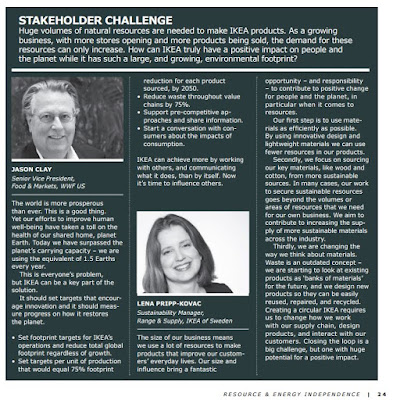









































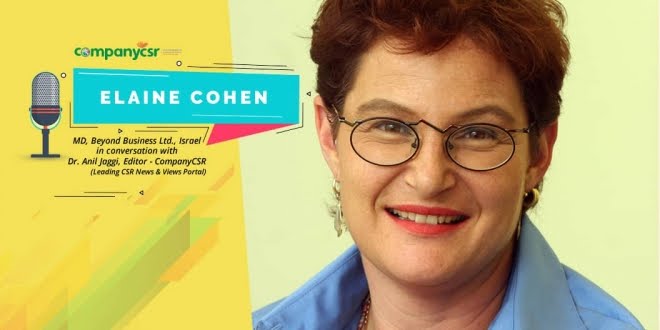
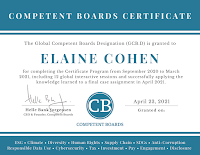


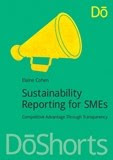
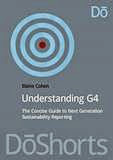
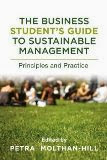
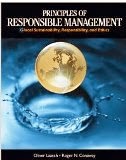
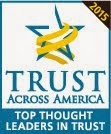










2 comments:
Hi Elaine.
So nice to see a Colombian company making your Top10!!!!
Wish you an excellent 2016 an see you in the GRI event in May!!!
Provides useful information about the Csr reporting which helps in gaining the better knowledge
Sustainability Reporting
Post a Comment